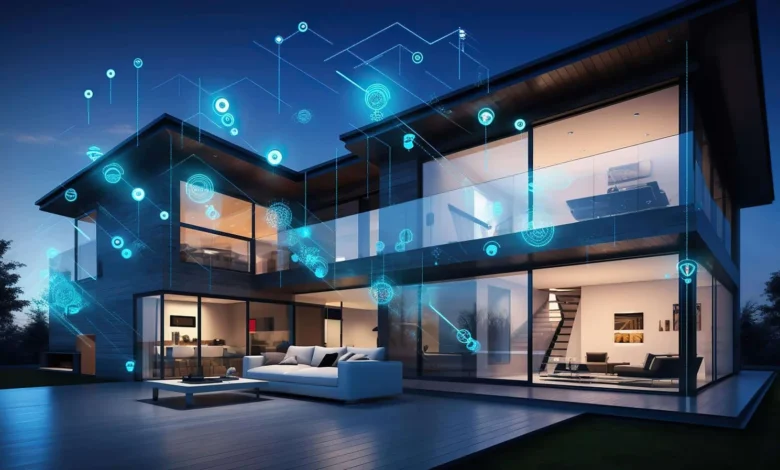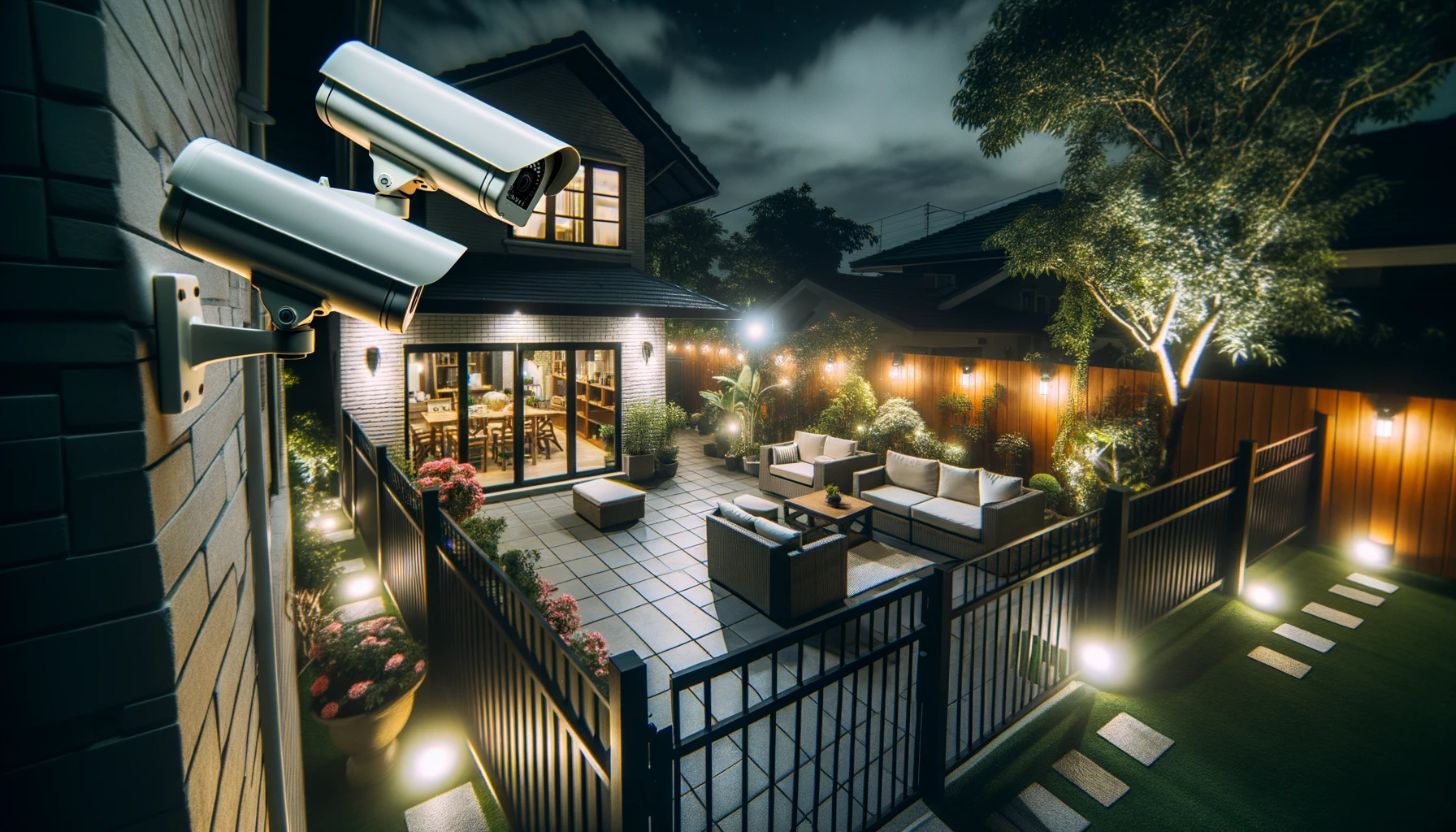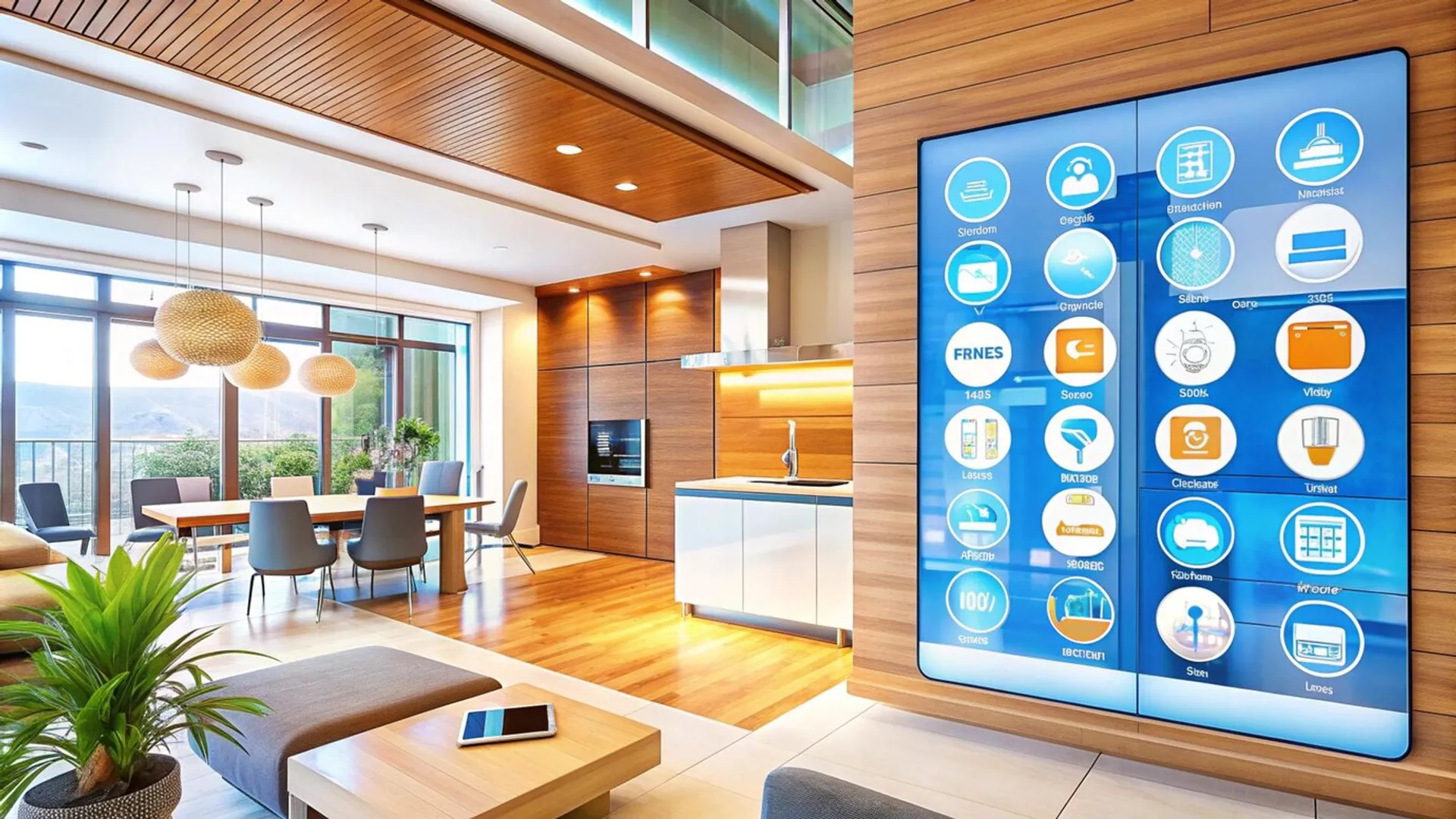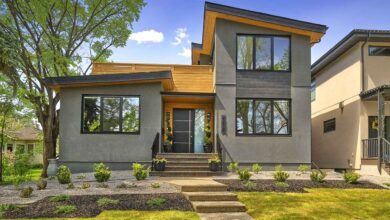Smart Home Technology Every Modern Home Needs
Smart Home Technology Every Modern Home Needs

The landscape of modern home technology has evolved dramatically, transforming traditional houses into intelligent, interconnected living spaces that respond to our needs and preferences. As we advance through 2025, smart home devices are no longer luxury items reserved for tech enthusiasts—they’ve become essential components of contemporary living that enhance security, increase energy efficiency, and provide unprecedented convenience.
Today’s home automation systems represent a perfect marriage of functionality and innovation, offering homeowners the ability to control everything from lighting and temperature to security cameras and entertainment systems through intuitive smartphone applications and voice commands. The integration of artificial intelligence and machine learning has made these systems more responsive and predictive than ever before, learning from daily routines to optimize comfort and efficiency automatically.
The smart home technology market continues to expand rapidly, with new devices constantly emerging that address specific household needs while seamlessly integrating with existing ecosystems. Whether you’re building a new home or upgrading an existing property, understanding which smart home automation devices provide the greatest value is crucial for creating a truly modern living environment.
This comprehensive guide explores the essential smart home devices that every contemporary household should consider, examining their benefits, installation requirements, and how they work together to create a cohesive, intelligent home ecosystem. From basic smart lighting solutions to advanced security systems, we’ll cover the technologies that are reshaping how we interact with our living spaces and why they’ve become indispensable for modern homeowners seeking comfort, security, and efficiency.
Smart Lighting Systems: The Foundation of Home Automation
Smart lighting represents the most accessible and impactful entry point into home automation technology. Unlike traditional lighting systems, smart light bulbs and fixtures offer unprecedented control over illumination, allowing homeowners to adjust brightness, color temperature, and even RGB colors through smartphone apps or voice commands.
The primary advantage of smart lighting systems lies in their energy efficiency and customization capabilities. LED-based smart bulbs consume significantly less electricity than traditional incandescent bulbs while offering features like scheduling, dimming, and color changing. Popular brands like Philips Hue, LIFX, and Sengled provide comprehensive ecosystems that can transform any room’s ambiance with programmable scenes and automated routines.
Modern smart light switches and dimmers eliminate the need to replace existing bulbs, instead upgrading the control mechanism itself. These devices integrate with existing wiring and provide smart functionality to any connected light fixture. Advanced models include motion sensors, ambient light detection, and integration with other smart home devices for comprehensive automation scenarios.
Installation of smart lighting varies depending on the chosen approach. Smart bulbs simply screw into existing fixtures and connect to your home’s Wi-Fi network, while smart switches require basic electrical work but provide more comprehensive control. Many systems support both options, allowing for flexible implementation based on specific needs and technical comfort levels.
The integration capabilities of smart lighting extend far beyond simple on/off control. These systems can automatically adjust based on time of day, occupancy sensors, or even sync with entertainment systems for immersive experiences. Energy monitoring features help track consumption and identify opportunities for additional savings, making smart lighting both environmentally responsible and cost-effective.
Smart Thermostats: Optimizing Climate Control
Smart thermostats have revolutionized home climate control by combining intelligent automation with user-friendly interfaces and significant energy savings potential. These devices learn household patterns and preferences to optimize heating and cooling systems automatically, often reducing energy consumption by 10-15% compared to traditional programmable thermostats.
Leading smart thermostat models like the Nest Learning Thermostat, Ecobee, and Honeywell Lyric offer advanced features, including geofencing, which automatically adjusts temperature based on occupancy, and integration with weather forecasts to pre-condition homes for optimal comfort and efficiency. Remote access through smartphone apps allows homeowners to monitor and adjust their home’s climate from anywhere.
The installation process for smart thermostats varies based on existing HVAC systems and wiring configurations. Most modern systems support C-wire connections that provide continuous power to the thermostat, enabling advanced features like Wi-Fi connectivity and color displays. Professional installation may be recommended for complex HVAC systems or homes without compatible wiring.
Smart thermostats excel in their ability to create detailed scheduling and zoning systems. Multi-zone homes can benefit from systems that coordinate multiple thermostats or integrate with smart vents to direct airflow precisely where needed. These capabilities ensure optimal comfort while minimizing energy waste in unoccupied areas.
Integration with other smart home devices amplifies the benefits of intelligent climate control. Smart thermostats can coordinate with occupancy sensors, smart windows, and even smart lighting to create comprehensive comfort management systems. Voice control through assistants like Alexa, Google Assistant, or Siri provides convenient hands-free operation for temperature adjustments.
Home Security Systems: Advanced Protection Technology

Modern smart security systems provide comprehensive protection through integrated cameras, sensors, and monitoring capabilities that far exceed traditional alarm systems. These systems offer real-time alerts, remote monitoring, and intelligent detection algorithms that can distinguish between family members, visitors, and potential intruders.
Smart security cameras form the cornerstone of contemporary home protection, offering high-definition recording, night vision, and cloud storage capabilities. Indoor and outdoor models provide complete coverage, with features like two-way audio communication, motion tracking, and facial recognition. Popular brands, including Ring, Arlo, and Nes,t offer comprehensive camera ecosystems with varying feature sets and subscription options.
Smart door locks eliminate traditional key-based entry while providing enhanced security and convenience. These devices offer multiple access methods, including smartphone apps, numerical keypads, fingerprint recognition, and temporary access codes for guests or service providers. Integration with security systems enables automatic arming and disarming based on entry and exit patterns.
Window and door sensors, motion detectors, and glass break sensors create comprehensive perimeter protection when integrated with smart security systems. These devices communicate wirelessly with central hubs and can trigger various responses, including alerts, recording activation, and emergency service notifications. Professional monitoring services provide 24/7 oversight for maximum security coverage.
The integration of smart security with other home automation systems creates sophisticated protection scenarios. Lights can automatically activate when motion is detected, cameras can begin recording when doors are opened, and thermostats can adjust when security systems are armed. This interconnected approach provides both security and energy efficiency benefits.
Smart Speakers and Voice Assistants: Central Control Hubs
Smart speakers have evolved from simple music players into central command centers for smart home automation. These devices serve as voice-controlled interfaces for managing connected devices, accessing information, and controlling entertainment systems throughout the home.
Amazon Echo devices with Alexa, Google Nest speakers with Google Assistant, and Apple HomePod with Siri represent the primary ecosystems for voice-controlled smart home management. Each platform offers unique advantages in device compatibility, natural language processing, and integration with its respective service ecosystems.
The hub functionality of smart speakers extends beyond voice control to include direct device communication through protocols like Zigbee and Thread. This capability reduces reliance on cloud services and improves response times for local device control. Built-in smart home hubs eliminate the need for separate bridge devices in many installations.
Multi-room audio capabilities transform smart speakers into whole-home entertainment systems. Synchronized playback, individual room control, and integration with streaming services create seamless audio experiences throughout the home. Voice control enables hands-free music selection, volume adjustment, and playback control from any room.
Privacy and security considerations are paramount when implementing smart speakers in home environments. Voice recording management, data encryption, and local processing options help protect personal information while maintaining functionality. Understanding each platform’s privacy controls enables informed decisions about data sharing and storage.
Smart Appliances: Kitchen and Laundry Innovation
Smart appliances bring intelligence and connectivity to essential household tasks, offering improved efficiency, convenience, and monitoring capabilities. The kitchen represents the primary focus for smart appliance integration, with refrigerators, ovens, dishwashers, and cooking devices leading innovation in connected functionality.
Smart refrigerators offer features including internal cameras for remote food inventory monitoring, expiration date tracking, meal planning integration, and family communication hubs. Energy monitoring and diagnostic capabilities help identify maintenance needs and optimize energy consumption. Integration with grocery delivery services streamlines shopping and meal preparation.
Cooking appliances, including smart ovens, ranges, and specialized devices like sous vide machines, provide precise temperature control, remote monitoring, and guided cooking experiences. Smartphone apps offer recipe integration, cooking timers, and safety alerts for peace of mind when away from the kitchen. Voice control integration enables hands-free operation during food preparation.
Smart washing machines and dryers optimize cleaning cycles based on load size, fabric types, and soil levels while providing cycle completion notifications and energy consumption monitoring. Remote start capabilities allow laundry scheduling around energy pricing and household routines. Maintenance alerts help identify potential issues before they become costly problems.
Integration challenges for smart appliances include network connectivity, app ecosystem fragmentation, and compatibility with existing smart home platforms. Choosing appliances that support common standards like Wi-Fi, Zigbee, or Thread ensures better integration with comprehensive automation systems.
Smart Home Hubs: Unifying Device Control

Smart home hubs serve as the central nervous system for comprehensive home automation, connecting devices from different manufacturers and enabling sophisticated automation scenarios that wouldn’t be possible with individual device apps alone.
Popular smart home hubs, including Samsung SmartThings, Hubitat Elevation, and Amazon Echo Plus, provide local processing capabilities that reduce dependence on cloud services while improving response times and reliability. These devices support multiple communication protocols, including Zigbee, Z-Wave, and Wi-F, to accommodate diverse device ecosystems.
The automation capabilities of dedicated smart hubs extend far beyond simple scheduling to include complex conditional logic based on multiple sensor inputs, time-based triggers, and user-defined scenarios. Creating “scenes” that coordinate multiple devices simultaneously provides seamless control over entire home environments with a single command.
Smart home hub selection depends on technical expertise, device compatibility requirements, and desired automation complexity. Some platforms prioritize ease of use with simplified setup and limited customization, while others offer extensive programming capabilities for advanced users. Cloud-based vs. local processing represents another key consideration for privacy and reliability.
Future-proofing considerations include support for emerging standards like Matter, regular software updates, and active developer communities. Choosing hubs with strong ecosystems ensures ongoing compatibility with new devices and features as smart home technology continues evolving.
Energy Management and Monitoring Systems
Smart energy management systems provide detailed insights into household electricity consumption while enabling targeted efficiency improvements and cost reduction strategies. These systems range from simple plug-in monitors to comprehensive whole-home energy management platforms.
Smart plugs and outlets offer the simplest approach to energy monitoring, providing individual device consumption data and remote control capabilities. These devices help identify energy-hungry appliances and enable automated scheduling to take advantage of time-of-use electricity pricing. Many models include USB charging capabilities and voice control integration.
Whole-home energy monitoring systems like Sense, Emporia Vue, and Generac PWRview provide comprehensive consumption analysis by monitoring main electrical panels. These systems can identify individual appliances through electrical signatures and provide detailed usage patterns, cost analysis, and efficiency recommendations.
Smart electrical panels represent the next evolution in home energy management, offering individual circuit monitoring, safety features like arc fault detection, and integration with solar panels and battery storage systems. These systems enable precise load management and can automatically shed non-essential loads during peak pricing periods.
Integration with smart home systems enables sophisticated energy management automation. Smart thermostats can coordinate with time-of-use pricing, smart water heaters can schedule heating during off-peak hours, and smart appliances can delay operation until optimal pricing periods. This coordination maximizes cost savings while maintaining comfort and convenience.
Entertainment and Media Systems
Smart entertainment systems transform traditional home theater setups into integrated, voice-controlled experiences that seamlessly coordinate audio, video, and lighting for immersive entertainment. These systems range from simple streaming device upgrades to comprehensive whole-home audio-visual installations.
Smart TVs and streaming devices like Apple TV, Roku, and Amazon Fire TV provide access to countless entertainment services while integrating with broader smart home ecosystems. Voice control enables hands-free content selection and playback control, while smartphone apps provide convenient remote control and content casting capabilities.
Multi-room audio systems create synchronized music experiences throughout the home using smart speakers, in-ceiling speakers, and dedicated audio zones. Platforms like Sonos, Bose, and built-in solutions from Amazon and Google provide seamless whole-home audio with individual room control and voice commands.
Home theater integration with smart home systems enables automated lighting scenes, temperature adjustments, and even automated screen and projector deployment for dedicated theater rooms. These integrations create immersive experiences that automatically optimize the environment for different content types and viewing preferences.
Gaming integration represents an emerging area where smart home technology enhances entertainment experiences through responsive lighting that syncs with gameplay, automated Do Not Disturb modes, and voice control for game launching and system management. These features create more engaging gaming environments while maintaining household harmony.
Water Management and Leak Detection
Smart water management systems provide crucial protection against water damage while offering insights into household water consumption patterns and conservation opportunities. These systems range from simple leak detectors to comprehensive water monitoring and shut-off systems.
Smart leak detectors placed near water heaters, washing machines, dishwashers, and other potential failure points provide early warning of water issues through smartphone alerts and integration with smart home security systems. Battery-powered sensors offer easy installation without electrical work, while some models include temperature and humidity monitoring for comprehensive environmental awareness.
Smart water shut-off valves provide automated protection by stopping water flow when leaks are detected or when homeowners are away for extended periods. These systems can be controlled remotely and integrated with leak detection sensors for comprehensive protection. Professional installation is typically required for main water line integration.
Irrigation system automation through smart sprinkler controllers optimizes outdoor water usage based on weather forecasts, soil moisture levels, and plant requirements. These systems can significantly reduce water waste while maintaining healthy landscapes through intelligent scheduling and zone-based control.
Smart water heaters provide energy efficiency improvements through intelligent heating schedules, vacation modes, and integration with time-of-use electricity pricing. Remote monitoring capabilities alert homeowners to maintenance needs and potential failures before they become emergencies.
Installation and Setup Considerations
Successful smart home implementation requires careful planning around network infrastructure, device compatibility, and installation requirements. Understanding these factors helps ensure smooth deployment and optimal system performance.
Network infrastructure forms the foundation of any smart home system. Robust Wi-Fi coverage throughout the home is essential, with many installations benefiting from mesh networking systems that provide consistent connectivity to all areas. Ethernet wiring for critical devices like security cameras and hubs provides the most reliable connections.
Device compatibility and ecosystem selection significantly impact long-term satisfaction and expansion possibilities. Choosing devices that support common standards like Wi-Fi, Zigbee, Z-Wave, or the emerging Matter standard ensures better interoperability and future-proofing. Sticking with major ecosystems like Amazon Alexa, Google Assistant, or Apple HomeKit simplifies integration and voice control.
Professional vs. DIY installation depends on device complexity, electrical requirements, and personal technical comfort levels. Simple devices like smart bulbs and smart plugs require no special skills, while smart thermostats, security cameras, and electrical panel modifications often benefit from professional installation to ensure safety and optimal performance.
Phased implementation allows homeowners to gradually build smart home capabilities while spreading costs over time and learning system operation. Starting with high-impact devices like smart thermostats and smart lighting provides immediate benefits while establishing the foundation for future expansion.
Security and Privacy Considerations
Smart home security extends beyond physical protection to include cybersecurity and privacy concerns related to connected devices and data collection. Understanding these considerations helps homeowners make informed decisions about device selection and configuration.
Network security forms the foundation of smart home cybersecurity. Using strong, unique Wi-Fi passwords, enabling WPA3 encryption, and creating separate networks for smart home devices helps isolate potential security breaches. Regular router firmware updates and security audits ensure ongoing protection.
Device security practices include changing default passwords, enabling automatic security updates, and regularly reviewing connected device lists. Understanding each device’s data collection and sharing practices enables informed privacy decisions. Choosing devices from reputable manufacturers with strong security track records reduces risk exposure.
Data privacy considerations include understanding what information smart home devices collect, how it’s stored and shared, and what control options are available. Reading privacy policies and configuring privacy settings appropriately helps balance functionality with personal privacy preferences.
Local vs. cloud processing represents a key privacy consideration, with local processing offering greater privacy and reliability at the cost of some advanced features. Hybrid approaches that combine local control with optional cloud services provide flexibility in balancing privacy and functionality.
Cost Analysis and Return on Investment
Understanding the financial implications of smart home investments helps homeowners make informed decisions about which technologies provide the best value for their specific situations and priorities. Initial investment costs vary dramatically based on the scope of Smart Home Technology implementation, ranging from under $100 for basic smart lighting and smart plugs to thousands of dollars for comprehensive security and automation systems.
Prioritizing high-impact devices provides the best initial value while establishing the foundation for future expansion. Energy savings from smart thermostats, smart lighting, and smart appliances can provide measurable returns on investment through reduced utility bills. Smart thermostats alone can save 10-15% on heating and cooling costs, while smart lighting and energy monitoring systems help identify and eliminate energy waste.
Insurance benefits may be available for homes with smart security systems, smart smoke detectors, and smart water leak detection systems. These discounts recognize the reduced risk these technologies provide and can help offset installation costs while providing ongoing savings.
Home value increases from smart home installations vary by market and installation quality, but studies suggest that well-integrated smart home systems can increase property values by 3-5%. The appeal to tech-savvy buyers and the perception of modernity and efficiency contribute to this value enhancement.
Long-term cost considerations include device replacement cycles, subscription services for cloud features, and potential energy savings. Choosing devices with good warranty coverage and strong manufacturer support helps ensure long-term value from smart home investments.
Future Trends and Emerging Technologies
The smart home technology landscape continues evolving rapidly, with emerging trends shaping the next generation of home automation capabilities and user experiences. Artificial intelligence integration is advancing beyond simple voice recognition to include predictive automation that learns household patterns and preferences. AI-powered systems will anticipate needs and automatically adjust environments based on historical data, weather conditions, and user behavior patterns.
Matter standardization promises to resolve many current interoperability challenges by providing a unified communication protocol that enables seamless integration between devices from different manufacturers. This standardization will simplify smart home setup and expand device choice options.
Edge computing capabilities in smart home devices reduce dependence on cloud services while improving response times and privacy protection. Local processing of voice commands, video analysis, and automation logic provides faster, more reliable operation with enhanced security.
Health monitoring integration represents an emerging application area where smart home technology supports wellness and aging-in-place goals. Air quality monitoring, fall detection, medication reminders, and activity tracking integrated into home environments provide health insights and safety features.
Sustainability focus continues driving innovation in energy management, water conservation, and waste reduction through intelligent resource management and optimization algorithms. Smart home systems increasingly prioritize environmental impact alongside convenience and cost considerations.
More Read: 15 Ways for Smart Home Technology: Enchanting Your Decor and Lifestyle
Conclusion
Smart home technology has evolved from futuristic concepts to practical necessities that enhance security, efficiency, and convenience in modern homes. The essential devices covered in this guide—from smart lighting and smart thermostats to comprehensive security systems and home automation hubs—represent proven technologies that provide immediate benefits while establishing the foundation for future innovations.
By carefully selecting compatible devices, prioritizing high-impact installations, and considering long-term expansion possibilities, homeowners can create intelligent living environments that adapt to their needs while providing measurable returns through energy savings, enhanced security, and increased property value.
As smart home technology continues advancing with AI integration, improved interoperability, and emerging health monitoring capabilities, early adoption of core systems positions homes for seamless integration of future innovations, making smart home automation an essential investment for contemporary living.











